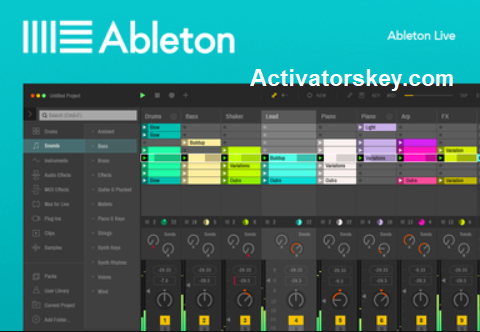

Picking a MacBook for a gapless playback, live-use focused DAW like Ableton can be a little trickier than others. However, one guarantee you can get from Apple’s products is that no matter what machine you go for, it will deliver a truly premium experience that just works!Ĭomparing The Top 4 MacBook Variants for Ableton While there are benefits to running Ableton on both versions, it’s important to be sure which one suits your needs best, and that you have the hardware you need, because whatever your choice is, it can’t be upgraded in the future since everything on a MacBook is soldered on. This is where the money you save on the M1 MacBook comes in handy.
#Ableton live 11 mac free
As you run out of RAM, macOS will have to deposit unneeded data onto your SSD to free up room, which happens less often the more RAM you have, keeping things running smoothly.

What your system memory really does for a DAW like Ableton is that rather than streaming data from the slower SSD, it stores your project’s audio files, sample libraries, and plugins on its faster memory for quick recall so you can work without stutters as your memory fills up. To put a number to it, 16GB is the minimum you should consider for large sample libraries and lengthy audio chains, while 32 GB will ensure a smoother experience and futureproofing. This is particularly relevant for a DAW like Ableton that has a variety of demanding inbuilt features such as pitch detectors and multi-band compressors. The issue stems from the reduced number of NAND storage chips on the newer SSDs, which is why you don’t want to cheap out on internal storage on the M2 the same way you would on an M1 MacBook.įor more intense plugins and libraries such as Kontakt, Omnisphere, and Eastwest, your RAM config is more important than your CPU since the memory takes most of the toll. The M1 MacBooks aren’t just a cheaper deal however, they also don’t suffer from the same IO performance issues on the low-storage variants of the M2 versions, which can slow Ableton down when swapping from memory. The M2 variants have the upper hand in core count and clock speed, however, the M1 chips still offer excellent performance that will keep Ableton running smoothly for years to come. While more cores will allow you to run more VST plugins simultaneously, audio threads and plugins are processed on a single core, so the more powerful each individual core is, the faster it can process results. Based on numbers from our machines’ Activity Monitor, the difference in CPU usage between the two variants stands at 87% on the M1 to the M2’s 75%, and you’ll only ever notice it on heavier tasks such as bouncing audio.Ībleton supports up to 64 cores, however, the number of cores you require is somewhat of a balancing act. Compared to the difference between the Intel chips and the Apple SoC variants, the jump from M1 to M2 is quite incremental. If you don’t need the extra performance and efficiency, then you can forgo the newer M2 model. Additional Reads: Laptops, Desktops and Audio Interfaces for Ableton


 0 kommentar(er)
0 kommentar(er)
